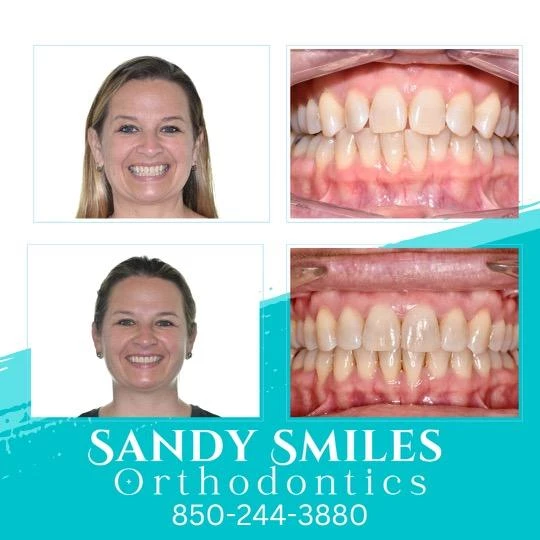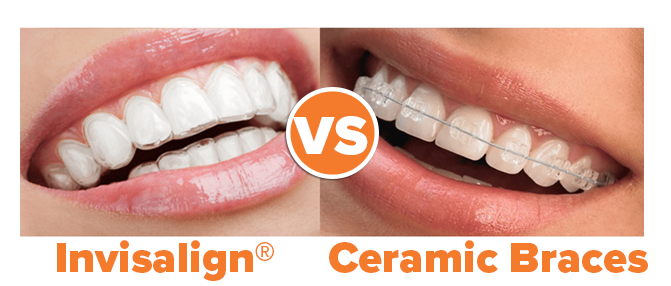Success Stories: How Invisalign Changed Lives and Enhanced Confidence
Success Stories: How Invisalign Changed Lives and Enhanced Confidence
Blog Article
Invisalign vs. Typical Dental braces: Which Option Is Right for You?
When considering orthodontic treatment, the option in between Invisalign and typical braces presents a number of crucial variables that merit careful assessment. Invisalign uses a very discreet alternative with removable aligners, while conventional braces supply an extra noticeable yet reliable solution for severe misalignment.
Introduction of Therapy Alternatives

On the other hand, traditional braces include steel braces and wires that are bound to the teeth. This approach uses continuous pressure gradually to attain alignment. While efficient for intricate orthodontic issues, conventional dental braces call for normal sees for changes and can position difficulties in keeping dental health due to the problem of cleaning up about braces and cords.
Both alternatives have their benefits, and the option typically depends upon details oral problems, way of living choices, and person conformity. Inevitably, consulting an orthodontic professional is essential for figuring out the most appropriate treatment plan customized to specific demands. Recognizing the subtleties of each choice can substantially affect the general success of orthodontic therapy.
Aesthetic Considerations
A considerable variable influencing the selection between Invisalign and traditional dental braces is the aesthetic charm each therapy uses. Invisalign aligners are crafted from clear plastic, making them virtually unseen when worn.
On the other hand, conventional dental braces contain steel braces and wires, which can be extra visible. While innovations in orthodontic innovation have actually resulted in the growth of smaller braces and colored elastics, standard braces still preserve an even more conspicuous account. For some people, the exposure of dental braces might deter them from seeking essential treatment.
Eventually, the selection between Invisalign and standard dental braces might pivot on personal preferences regarding aesthetic appeals. Patients who prioritize discernment usually favor Invisalign, while those that are less concerned regarding exposure might go with conventional dental braces. Recognizing the visual effects of each alternative is essential for making a notified decision that straightens with one's lifestyle and preferences.
Convenience and Convenience

In regards to convenience, Invisalign aligners are removable, allowing clients to enjoy their preferred foods without limitation and preserve optimal oral hygiene. Brushing and flossing are simplified, as the aligners can be taken out throughout these regimens, whereas standard dental braces need cautious maneuvering around brackets and wires.
In contrast, standard braces necessitate normal modifications, making them less practical for those with busy timetables. In general, the convenience and benefit of Invisalign make it an appealing option for many people looking for orthodontic treatment.
Therapy Duration and Performance
While both Invisalign and standard braces are efficient in correcting dental misalignments, the duration of therapy can differ substantially in between the two choices. Generally, Invisalign therapy can take anywhere from 12 to 18 months, relying on the complexity of the situation. The clear aligners function by gradually moving teeth right into their desired settings, and routine follow-ups with an orthodontist assistance ensure progress stays click here for more info on course.
In contrast, conventional dental braces usually require a longer commitment, normally varying from 18 months to 3 years. This is due to their fixed nature and the use of braces and cords, which can be much more efficient for extreme imbalances and complex cases (Invisalign). The therapy performance of traditional braces is well-documented, as they enable for exact changes and better control over tooth activity
Ultimately, the choice in between Invisalign and standard dental braces might pivot on both the awaited therapy duration and the certain oral problems at hand. Consulting with an orthodontist is important, as they news can give customized suggestions based on private needs, guaranteeing the chosen technique straightens with wanted end results and timeframes.
Price Comparison and Insurance Coverage Choices
Cost plays a substantial duty in the decision-making process for people thinking about orthodontic treatment, whether opting for Invisalign or typical braces. Generally, the price of Invisalign arrays from $3,000 to $8,000, while typical dental braces normally cost between $2,000 and $6,000. Factors influencing these prices consist of the intricacy of the case, the period of treatment, and geographical location.
Insurance policy coverage can significantly affect out-of-pocket expenses. Several dental insurance policy plans provide partial protection for orthodontic treatments, however the specifics can differ commonly. It is crucial for individuals to review their insurance plan to figure out the level of protection for either alternative. Generally, traditional braces may be extra frequently covered by insurance coverage strategies compared to Invisalign, which some insurance firms categorize as a cosmetic treatment.
Additionally, several orthodontic methods use adaptable layaway plan, making both treatment options much more accessible. Patients ought to ask regarding possible funding options and discounts for in advance repayments. Reviewing the total expense, including insurance coverage advantages and settlement strategies, is important for making a notified decision that aligns with both aesthetic preferences and budget considerations.

Verdict
In recap, the choice between Invisalign and standard braces hinges on numerous aspects, including aesthetic choices, convenience, treatment duration, and cost. Invisalign offers a very discreet, removable alternative that promotes oral health and dietary adaptability, while typical braces might be better for complex dental concerns and frequently come find out this here with a lower cost factor. Inevitably, examination with an orthodontist is important to evaluate specific circumstances and identify one of the most ideal treatment choice for accomplishing optimum oral positioning.
When thinking about orthodontic therapy, the selection between Invisalign and conventional braces provides numerous vital factors that merit cautious analysis.Comparing Invisalign and conventional braces reveals unique treatment choices for orthodontic improvement.While both Invisalign and typical braces are effective in fixing dental misalignments, the duration of treatment can vary substantially in between the 2 alternatives.Price plays a substantial duty in the decision-making procedure for people taking into consideration orthodontic therapy, whether deciding for Invisalign or typical dental braces.In recap, the option between Invisalign and conventional braces hinges on numerous factors, consisting of visual choices, comfort, treatment period, and price.
Report this page